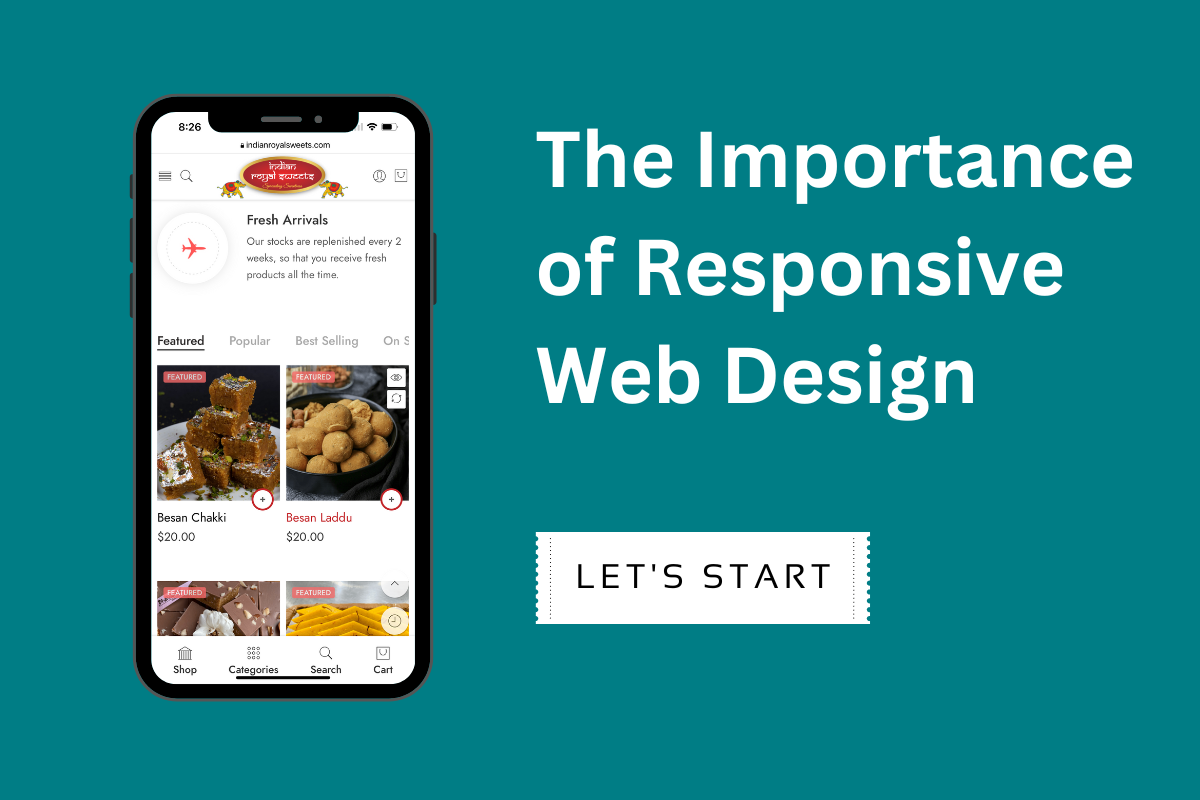In today’s fast-paced digital landscape, where smartphones and tablets have become an integral part of our lives, it is crucial for businesses to adapt to the mobile era. Mobile devices account for a significant portion of web traffic, and catering to mobile users has become a necessity. This is where responsive web design comes into play. In this article, we will explore the importance of responsive web design and how it helps create websites that deliver seamless user experiences across all devices.
- The Mobile Revolution:
Mobile devices have revolutionized the way people access the internet. With the increasing affordability and accessibility of smartphones, more and more users are relying on their mobile devices to browse websites, shop online, and interact with businesses. This shift in consumer behavior necessitates a shift in web design strategies.
- What is Responsive Web Design?
Responsive web design is an approach to web development that focuses on creating websites that adapt and respond to different screen sizes and devices. It involves designing and coding websites in a way that ensures optimal viewing and interaction experiences, regardless of whether a user is on a desktop, laptop, tablet, or smartphone.
- Enhanced User Experience:
One of the primary benefits of responsive web design is the enhanced user experience it offers. By optimizing the layout, content, and functionality for various devices, responsive websites provide a seamless and consistent experience for users. The website automatically adjusts its elements, such as font sizes, images, and navigation menus, to fit the screen, eliminating the need for users to zoom in or scroll horizontally.
- Improved SEO Performance:
Search engines, like Google, consider mobile-friendliness as a ranking factor in search results. Responsive web design plays a crucial role in improving a website’s search engine optimization (SEO) performance. With a responsive website, businesses can maintain a single URL and avoid duplicate content issues that may arise with separate mobile and desktop versions. Furthermore, responsive design ensures that users can easily share and link to a website’s content, contributing to higher visibility and improved search rankings.
- Cost and Time Efficiency:
Maintaining multiple versions of a website, such as a desktop version and a separate mobile version, can be time-consuming and costly. Responsive web design eliminates the need for separate development and maintenance efforts, as a single website can adapt to different devices. This approach saves time, reduces development costs, and simplifies ongoing updates and maintenance tasks.
- Future-Proofing Your Website:
The digital landscape is constantly evolving, and new devices with varying screen sizes are regularly introduced to the market. Responsive web design future-proofs your website by ensuring it remains compatible with upcoming devices. With a responsive design, your website can adapt seamlessly to the screen sizes and resolutions of future devices, providing a consistent experience to users.
In the mobile era, responsive web design has become an essential component of a successful online presence. It allows businesses to reach and engage a broader audience by delivering exceptional user experiences across devices. Responsive websites not only enhance user satisfaction but also improve search engine visibility and reduce development and maintenance costs.
Need A Website Or Web Design & Development Services? Contact Us Today.








